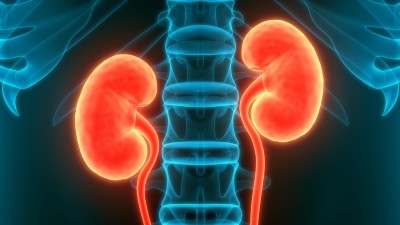Untreated CKD expected to become world's fifth leading cause of death by 2040 - and 90% are unaware they have it

Following on from this news, OSP put several questions to the pharma giant to dig deeper into the study.
Can you provide more insights into the methodology used in the IMPACT CKD study, particularly regarding how the modeling analysis was conducted and the data sources utilized?
The IMPACT CKD microsimulation model simulates chronic kidney disease (CKD) progression and clinical event incidence across a generated population of one million individuals across the United States, Brazil, the United Kingdom, Spain, Germany, the Netherlands, China, and Australia from 2022-2032. The simulation is guided by clinical, demographic, epidemiological, socio-economic, and environmental inputs generated from the London School of Economics framework, which was built to map national and regional CKD treatment pathways and model the holistic disease burden of CKD. Local data was obtained for each country through literature reviews and experts to accurately generate and simulate a representative population. The model covers the entire CKD pathway from primary care to end-of-life care.
OSP: The study highlights a significant increase in the prevalence of CKD, especially in advanced-stage cases. What factors contribute to this alarming rise, and are there any specific demographics or regions more affected than others?
CKD tends to be more common in older people, women, and racial and ethnic minorities, however, the disease can also affect children and younger adults. Additionally, the burden of CKD is highest among historically disadvantaged populations that often have limited access to screening and care, especially in low- or middle-income countries.
CKD is expected to become the world’s fifth leading cause of death by 2040, and if left undiagnosed and untreated, CKD leads to end-stage kidney disease or kidney failure, leaving patients in need of a kidney transplant or long-term dialysis. Most people (90%) with CKD are unaware that they have the disease. Approximately half of those with severely reduced kidney function (stages 3-5) remain undiagnosed even as symptoms become apparent.
OSP: How does AstraZeneca plan to collaborate with policymakers to address the global impact of end-stage CKD, and what specific measures or initiatives are being considered?
AstraZeneca is committed to the exploration of new and innovative solutions across the full continuum of CKD care. From prevention and protection to disease management, we aim to slow the progression of CKD and reduce the risk of serious complications across all stages of disease. AstraZeneca’s Act on CKD initiative aims to educate, improve outcomes of CKD worldwide and reduce progression to kidney failure by 20% by 2025. We continue to invest in CKD real world evidence and modelling studies to increase the understanding of disease prevalence, management, and impact on patients, caregivers, health systems, economies, and the environment.
The Global Patient Alliance for Kidney Health (GloPAKH) and AstraZeneca recently launched ‘Make the Change for Kidney Health,’ a campaign calling on governments and policymakers to make CKD an urgent global public health priority and implement patient-centered, evidence-based policies enabling earlier detection, diagnosis, and access to care and recommended treatments.
Together with GloPAKH, our ambition is for a future in which early detection, diagnosis and immediate access to recommended treatment and care can enable those affected by CKD to live better, healthier lives.
OSP: The economic toll of CKD, as outlined in the study, is substantial. Can you explain in more detail how the projected $186 billion in costs related to renal replacement therapy were calculated and what implications this has for healthcare systems?
The IMPACT CKD analysis predicts the economic toll of renal replacement therapy, including dialysis and transplant, will reach approximately $186 billion by 2032. The simulation is guided by clinical, demographic, epidemiological, socio-economic and environmental inputs generated from the London School of Economics framework, which was built to map national and regional CKD treatment pathways and model the holistic disease burden of CKD. Local data was obtained for each country through literature reviews and experts to accurately generate and simulate a representative population.
Without policy change advocating for the early diagnosis and treatment of CKD, this will place a great burden on clinical and healthcare resource use. Additionally, economic productivity will be significantly impacted, with IMPACT CKD projecting 2.85 billion missed workdays due to patient absenteeism and 327 million missed workdays due to caregiver absenteeism. As a result, patients, caregivers, and healthcare systems alike are projected to incur significant financial losses from 2022 to 2032. Dialysis requirements are also expected to surge by over 75%, contributing significantly to healthcare's carbon footprint — equivalent to adding approximately 17.3 million cars' worth of CO2 emissions.
There is an urgent need for tailored, sustainable interventions, addressing clinical and economic consequences as well as the escalating environmental impact associated with end-stage CKD treatments.





















